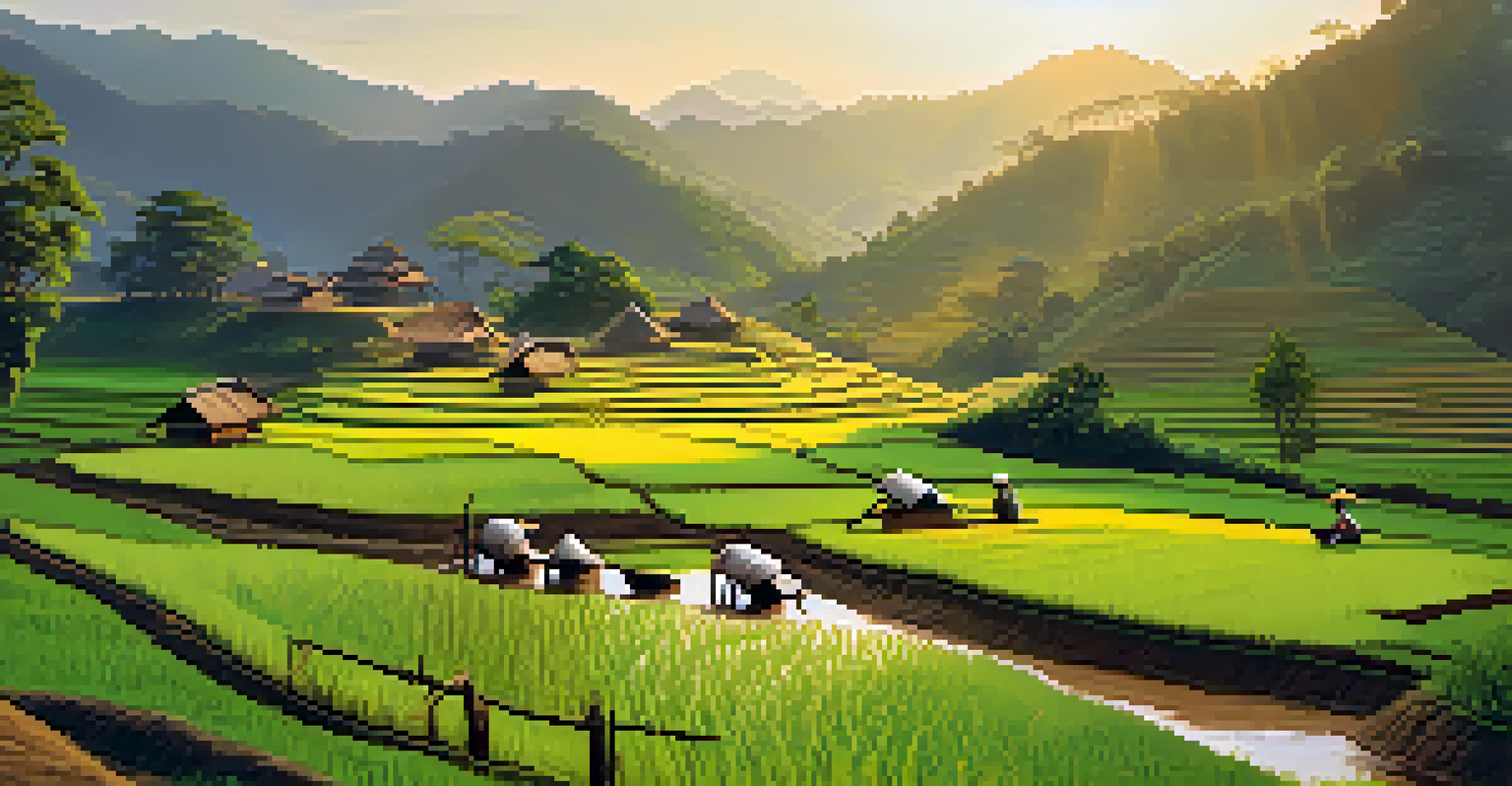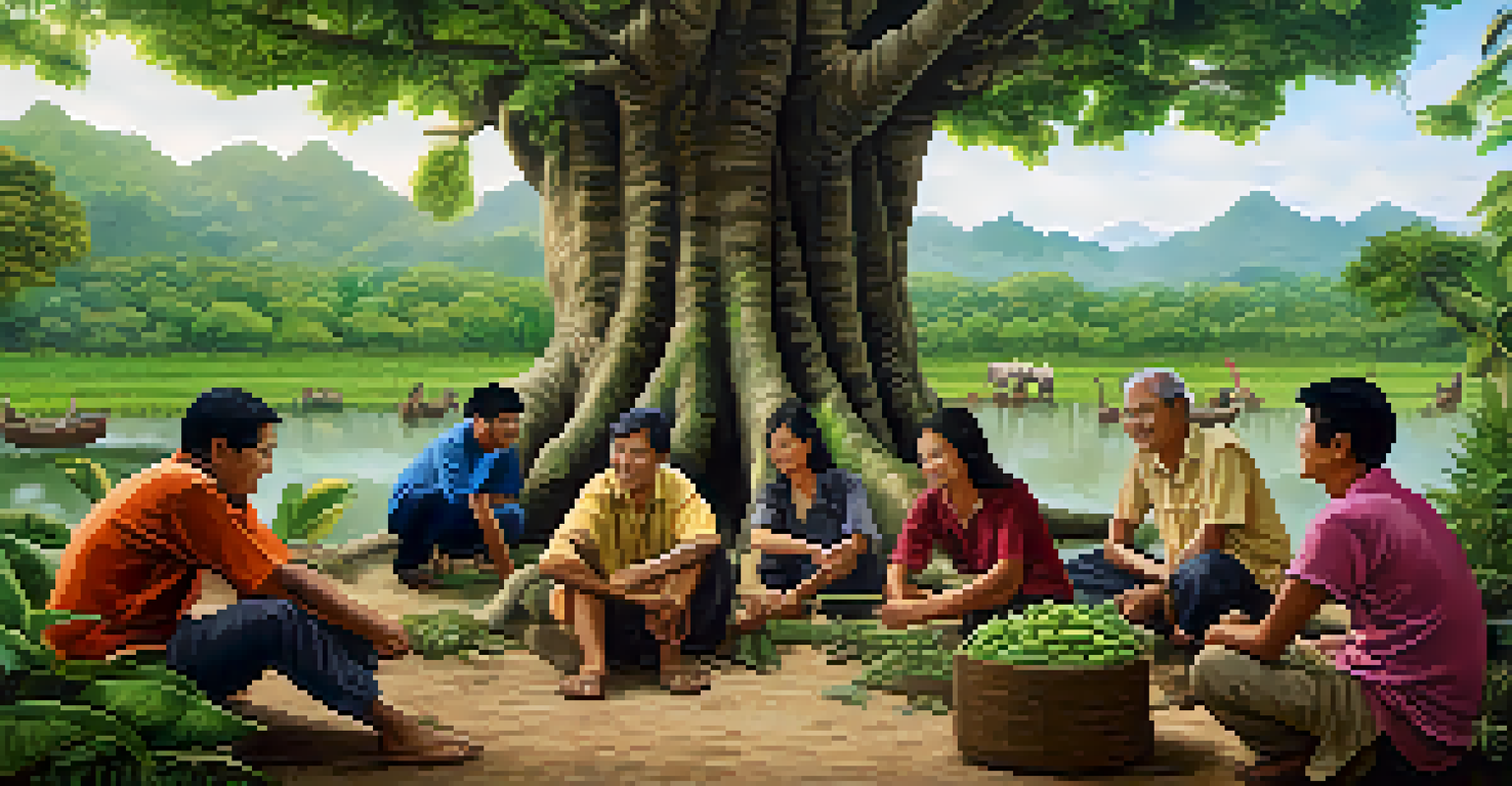The Role of Traditional Practices in Conservation in Thailand

Understanding Traditional Practices in Thailand's Culture
Traditional practices in Thailand are deeply rooted in the country's history and culture. These customs, passed down through generations, often reflect a harmonious relationship with nature. For instance, many rural communities rely on local wisdom to sustainably manage resources, such as water and forests.
The best way to predict the future is to create it.
This connection to the land manifests in various forms, from agricultural techniques to rituals that honor the environment. For example, rice farming practices often incorporate seasonal floods, which not only support crop growth but also maintain the ecosystem. This synergy between culture and nature is essential for conservation efforts.
By recognizing the value of these traditional practices, conservationists can better understand the local context. Engaging with communities allows for a more inclusive approach, ensuring that conservation strategies respect and integrate these time-honored methods.
The Impact of Local Knowledge on Biodiversity Conservation
Local knowledge plays a crucial role in preserving Thailand's rich biodiversity. Indigenous communities possess an intimate understanding of their environment, which has been cultivated over centuries. This knowledge includes identifying medicinal plants, understanding animal behaviors, and recognizing seasonal changes.

For example, the traditional practice of shifting cultivation has been used for generations to maintain soil fertility and prevent over-exploitation. When combined with modern conservation techniques, this local knowledge can lead to more effective strategies for protecting endangered species and habitats.
Tradition Supports Conservation Efforts
Traditional practices in Thailand, rooted in local knowledge, play a vital role in sustainable resource management and biodiversity preservation.
By valuing and incorporating local knowledge, conservation efforts can become more adaptive and resilient. This collaborative approach not only fosters community involvement but also enhances the sustainability of conservation initiatives across Thailand.
Cultural Festivals: Celebrating Nature and Conservation
Cultural festivals in Thailand often center around themes of nature and conservation, highlighting the importance of environmental stewardship. Events like the Loy Krathong festival celebrate waterways and encourage communities to reflect on their relationship with water. Such celebrations foster a sense of responsibility towards the environment.
In every walk with nature one receives far more than he seeks.
These festivals serve as platforms for raising awareness about conservation issues. By engaging the community in fun and meaningful ways, they promote sustainable practices and encourage participation in local conservation efforts. For instance, activities during these festivals can include tree planting or clean-up drives.
Moreover, these cultural events create a sense of unity among participants, reinforcing the idea that collective action is essential for conservation. By blending tradition with environmental advocacy, these festivals play a vital role in promoting sustainable practices in Thailand.
Community-Based Conservation: A Traditional Approach
Community-based conservation is an approach that leverages traditional practices to protect natural resources. In Thailand, many communities have formed conservation groups that focus on sustainable resource management. This grassroots effort empowers locals to take charge of their environment while preserving cultural heritage.
For example, the Karen people in northern Thailand have established community forests where they manage resources collectively. This initiative not only protects biodiversity but also strengthens the community's cultural identity. Such efforts illustrate how traditional practices can contribute to effective conservation strategies.
Cultural Festivals Promote Awareness
Cultural festivals in Thailand engage communities in environmental stewardship, fostering a collective responsibility for conservation through celebration.
Engaging communities in conservation fosters a sense of ownership, making them more likely to protect their natural resources. By integrating traditional practices into conservation planning, Thailand can create sustainable solutions that benefit both people and nature.
Traditional Agriculture as a Tool for Conservation
Traditional agriculture in Thailand often emphasizes biodiversity and sustainability, making it a key player in conservation efforts. Farmers utilize diverse crops and crop rotation, which enhances soil health and reduces pest outbreaks. These practices not only yield food but also support local ecosystems.
For instance, the use of organic fertilizers and natural pest control methods minimizes the need for harmful chemicals, preserving the integrity of surrounding habitats. The emphasis on local seeds also promotes genetic diversity, which is crucial for resilience against climate change.
By supporting traditional agricultural practices, Thailand can protect its rich biodiversity while ensuring food security. Recognizing the importance of these methods allows for a more integrated approach to conservation that respects both nature and cultural heritage.
Challenges Facing Traditional Conservation Practices
Despite their significance, traditional conservation practices in Thailand face numerous challenges. Rapid urbanization and industrialization threaten the landscapes and resources that communities rely on. This shift often leads to a decline in traditional knowledge as younger generations migrate to cities for better opportunities.
Additionally, climate change poses a significant threat to the ecosystems that traditional practices depend on. Changes in weather patterns can disrupt seasonal cycles, affecting agricultural practices and local wildlife. As a result, communities may struggle to adapt their traditional methods to these new realities.
Adapting to Modern Challenges
Traditional conservation practices face challenges from urbanization and climate change, necessitating a blend of local wisdom and modern science for effective solutions.
Addressing these challenges requires a multifaceted approach that combines respect for traditional practices with modern conservation science. Supporting local communities in adapting to change is essential for preserving both cultural heritage and biodiversity in Thailand.
The Future of Conservation: Integrating Tradition and Innovation
The future of conservation in Thailand lies in the integration of traditional practices with innovative solutions. By blending local knowledge with scientific research, conservationists can develop more effective strategies that resonate with communities. This collaborative approach not only enhances conservation efforts but also strengthens community ties.
For example, utilizing technology such as satellite mapping alongside traditional land management practices can provide invaluable data for monitoring ecosystems. This integration allows for a more holistic understanding of environmental changes and the impacts on local communities.

Ultimately, the goal is to create a sustainable model of conservation that honors tradition while embracing innovation. By fostering collaboration and mutual respect, Thailand can pave the way for a more resilient future for both its people and the environment.